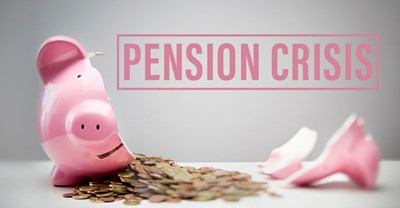
David Coates merits credit for sounding the alarm for years about the substantial underfunding patterns of the Vermont pensions. Most recently he was prescient in an article titled “State retirement plans need a robust stress test.” But alas, this test is more robust than Mr. Coates suggested was needed.
Vermont’s public pension system is grossly underfunded. The COVID-19 pandemic is now inflicting a “robust stress test” on that vulnerability, coupled with huge reductions in anticipated state tax receipts while emergency expenditures of some $40- 70 million are anticipated. It is hard to imagine how Vermont’s teachers and workers can now hope to be paid the benefits promised.
Vermont is not the worst offender in neglecting pension obligations — Pew Research ranks it ahead of 15 other states in funding ratios (Appendix B). As all states will now face drops in tax receipts at the same time as emergency expenditures spike, Vermont’s imploding pensions may be just one of many systems to fail nationally. If so, this is dire — for Vermont’s ineptitude has been epic.
Vermont’s pension liabilities “…are projected to eat up more than $200 million this year (almost 12% of the general fund).” The tale of how the “brave little state” achieved this level of perfidy is telling.
First, the legislature promised generous, open-ended benefits to workers and teachers. This pacified unions and curried voter favor with those interest groups, while allowing salaries to be kept modest and money to be spent elsewhere by profligate progressives who preferred to “save the planet” rather than save the pensioners.
Second, absurd projections were applied to actual invested funds far into the distant future. Most U.S. pensions play this game: in Vermont’s case, the assumed rate of market return on invested funds is currently 7.5% for the next thirty years. In a private entity this would cause a call for an audit, or some accounting rules to curb dishonesty — in Vermont it contributed to a downgrade of credit ratings while the economic skies were still blue.
Third, Vermont employed a bizarre accounting gimmick called “select-and-ultimate rate system” actuarial assumptions, which employed presumed rates of return on investments as high as 8.42%. It is unsurprising that those returns were not met. As reported last April:
In the 10-year period leading up to 2016, Vermont achieved about a 4.5% annual return on both its teachers’ and state employees’ pension funds, near the bottom of national rankings…. The treasurer’s office boasts a 7.7% annual return for the State Teachers’ Retirement System in the seven-year period through June 30, 2017…. In fiscal 2009, the teachers’ pension fund lost $177 million of value in a single year. Only 53% of the state’s pension funds were invested in equities up until last month, when the investment committee switched up the formula…. That means Vermont has not benefited as much as it could have from a booming stock market…. The new investment formula allocates 71% to “growth assets,” which includes equities.
Note that Vermont’s nincompoop methodology offers a textbook case of bad investing: it was in the market for the Great Recession; pulled out just in time to miss the boom; then jumped back in last year in time to be crushed by the current big bust. This is the opposite of an investor’s dream scenario, making it a nightmare for Vermont beneficiaries and taxpayers alike.
By understating liabilities, diverted funds were available for innumerable special interest expenditures like bike paths, or subsidies for electric vehicles. Also, the expanding bureaucracy awarded state employees pay increases that surpassed the income gains of taxpayers, and compromised private businesses with stifling regulations despite loss to revenue growth. The Vermont legislature promised cake with one hand and ate custard pie with the other. Now it must eat crow.
But someone must eat cake instead of bread, and that will be the teachers and workers — surely the union reps, administrators and legislators who concocted this bitter brew will not be the imbibers. As a recent Vermont Business Roundtable report recounted:
In other states, similar pension funding failures have led to the elimination of cost-of-living increases for pensioners, the pushing back of retirement ages, or cutting overall benefit packages…. And, as we move forward, any costs not covered by potential market gains (or losses) or through employee obligations will continue to be borne by Vermont taxpayers.
Metaphorically, if Vermont’s state pension system were a COVID-19 victim, it would be triaged as beyond salvage. In August 2019, the Institute for Pension Fund Integrity ranked Vermont’s system in it’s “Top 10 Worst Performing Pension Funds” in the country. Now COVID-19 is eviscerating the American economy. Every 1% that projected returns on Vermont’s investments fall short adds some $600 million to the currently estimated $4.6 billion deficiency. At a zero rate of return, obligations now exceed $9 billion (excluding growing benefits and increasing healthcare expenses).
Vermont now has a negative net worth because of its pension shenanigans. One can only imagine what will happen in the many states with even worse funding ratios.